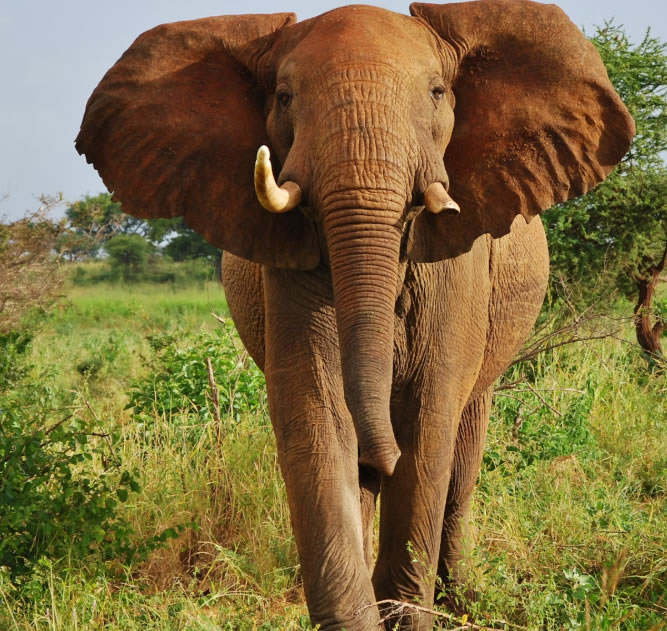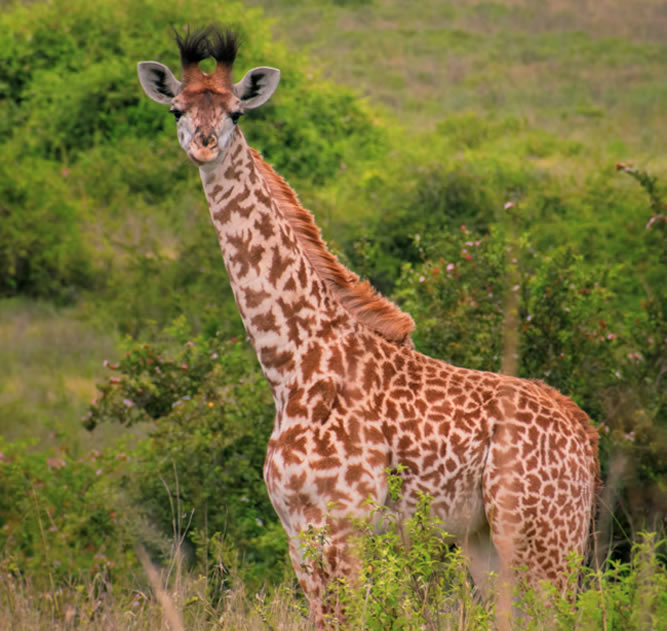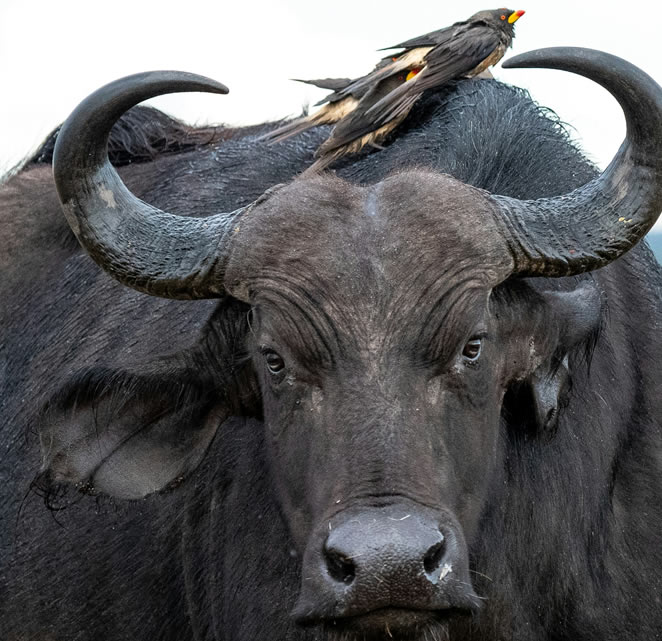


| Days | 6 Days 5 Nights |
|---|---|
| Highlights | Sightseeing Tours, Adventure Tours, Safari Tours |
| Transport | Jeep afari |
A 6-Day Northern Kenya Safari is an exciting adventure that allows you to explore the less-traveled but incredibly beautiful and culturally rich regions of the country. This itinerary will take you to some of Kenya’s remote and unique locations, where you’ll experience a combination of wildlife, landscapes, and rich local culture.
As your safari begins, you’re welcomed by the fresh morning air, the sounds of birds and distant wildlife, and the sight of a vast African landscape stretching before you.
Day 1: Nairobi – Aberdares (B L D)
After an Morning arrival at the Jomo Kenyatta Airport, after you clear with immigration procedures, our driver will await you with a big smile then after a short briefing, drive to Aberdares National park. This highland National Park offers a variety of landscapes, from swampland, bamboo and fern forests to waterfalls and rivers. We will arrive at Aberdares country club which is the base hotel for the Ark which is in the Aberdares national Park and have lunch. After lunch the hotel transport you and proceed to the beautiful lodge The Ark. Elephants dominantly rule the waterholes and salt licks, enjoy the rest of the afternoon and evening at the lookout corridor from which you may observe animals at the waterhole close-by. At night, the waterhole will attract special like rhinos, lions and leopards seek to get some water. Dinner and overnight stay in the lodge.
Day 2: Samburu National Reserve – Samburu Sopa Lodge (B L D)
Today we drive to the Northern parks of Kenya and visit Samburu National reserve, we will arrive in time for lunch at Samburu Sopa Lodge, after a short rest we will get to the park and make afternoon game drives, the park has very unique animal species which cannot be found in any other park in Kenya so we will have the opportunity to see these animals, as the sun is going down we will get back to the lodge for dinner and overnight.
Day 3: Samburu National Reserve – Samburu Sopa Lodge
The full day will be spent in this famous park for its wildlife diversity and specification. Samburu National reserve has unique animal species which are endemic to areas which are at the Northern part of the Equator, these animals are Gravy’s zebra, Reticulated Giraffe, Beisa Oryx and Gerenuk, you are also guaranteed to see cheetahs, lions, leopards, impalas, buffalo, hippos, dik-diks among other animals. Bird life here is abudant with some birds which are also endemic there like the Somali Ostrich, yellow throated sandgrouse among other birds.
Picnic lunch will served at a site and continue with extensive game drives to even Buffalo springs resereve, visit Ewaso nyiro river and see hippos and crocodiles. Come back in the evening for dinner and overnight at our Lodge.
Day 4: Meru National Park – Ikweta Safari Camp (B L D)
After an early safari and breakfast, we will depart Samburu and drive to Meru National park where we will arrive in time for lunch, after a short rest we will get down to game drives in the park. Meru National Park is wild and beautiful. Straddling the equator and bisected by 13 rivers and numerous mountain-fed streams, it is an especially beautiful area of Kenya. It has diverse scenery from woodlands at 3,400ft (1,036m) on the slopes of Nyambeni Mountain Range, north east of Mt. Kenya, to wide open plains with meandering riverbanks dotted with doum palms. We will come back in the evening for dinner and overnight at Ikweta Safari camp.
Day 5: Meru National Park – Ikweta Safari Camp (B L D)
After breakfast, we will do full day game drives in Meru National park. Over 300 species of birds have been recorded, including: Red-necked falcon, Heuglins courser, brown-backed woodpecker, sunbirds Peter’s Fin foot, inhabiting the Murera and Ura Rivers; Pel’s Fishing Owl, kingfishers, rollers, bee-eaters, starlings and weavers. The Park is most famous as the setting for Joy Adamson’s book “Born Free”, the story of the Adamson’s life and research amongst lion and cheetah. “Elsa” the lioness was the most well-known and her grave is marked here. Look out for lion, elephant, cheetah, leopard black rhino, zebra, gazelle, Oryx and some of the rarer antelope, Lesser Kudu and duiker, also the more common Dik Dik, one of Africa’s smallest antelope. Large prides of lion can be seen and some of Kenya’s largest herds of buffalo. The rivers abound with hippo and crocodile, fishing for barbus and catfish is permitted at camp sites and along the Tana River. In the mid 1980’s, the Park suffered from poaching, however KWS armed wildlife security patrols have driven out the poachers and the elephant population has stabilized with breeding herds settling down.
Day 6: Return – Nairobi city excursion – Flight Back (B )
After breakfast we will proceed to Nairobi to have lunch at a town restaurant. On arrival to Nairobi we will visit The Nairobi National museum where you will have chance to see different items and attires which portray Kenya cultures, and have a sightseeing city tour of Nairobi with dinner at the famous carnivore restaurant and there after get a transfer to the Airport where we will catch our flight back
PRICE INCLUDES
All park entrance fees
All game drives and transfers in a good customary minibus or Land cruiser on safari
Unlimited game drives up to 6pm (sundown)
Breakfast (B) / lunch (L) / dinner (D) as indicated
Accommodation in a double room in mentioned accommodations or similar
Local English speaking driver guide.
Enough bottled water each day
Detailed travel information.
PRICE DO NOT INCLUDE
International flight.
Visa for Kenya (about USD 50)
Beverages
Tips
June to October and January and February
June to October and December to March
April and May
June to October
March, April and May (Peak of the Wet season)
GROUP OR PRIVATE, 4×4 JEEP SAFARI Kwetu Safari Safari Tour features Days 8 Days 7 Nights Highlights Sightseeing Tours, Adventure Tours, Safari Tours…
GROUP OR PRIVATE, 4×4 JEEP SAFARI WILD CHEKERS SAFARI Tour features Days 9 Days 8 Nights Highlights Sightseeing Tours, Adventure Tours, Safari Tours…
GROUP OR PRIVATE, 4×4 JEEP SAFARI True African wilderness safari Tour features Days 9 Days 8 Nights Highlights Sightseeing Tours, Adventure Tours, Safari…
Trustindex verifies that the original source of the review is Google. Trustindex verifies that the original source of the review is Google. Trustindex verifies that the original source of the review is Google. Trustindex verifies that the original source of the review is Google. Trustindex verifies that the original source of the review is Google. Trustindex verifies that the original source of the review is Google. Trustindex verifies that the original source of the review is Google. Trustindex verifies that the original source of the review is Google. Trustindex verifies that the original source of the review is Google. Trustindex verifies that the original source of the review is Google.
Best Memory Safaris operates on excursions and safaris in East Africa. we also offer tailor made tour programs which specially fit your travel plan, including Mountain trekking,walking safaris and Social project visits. Our Kenyan office is located on the South Coast of Mombasa at Diani Beach and managed by a Team of seasoned professionals. We pride over 15 years experience and international class exposure in safari business.
No WhatsApp Number Found!
WhatsApp us